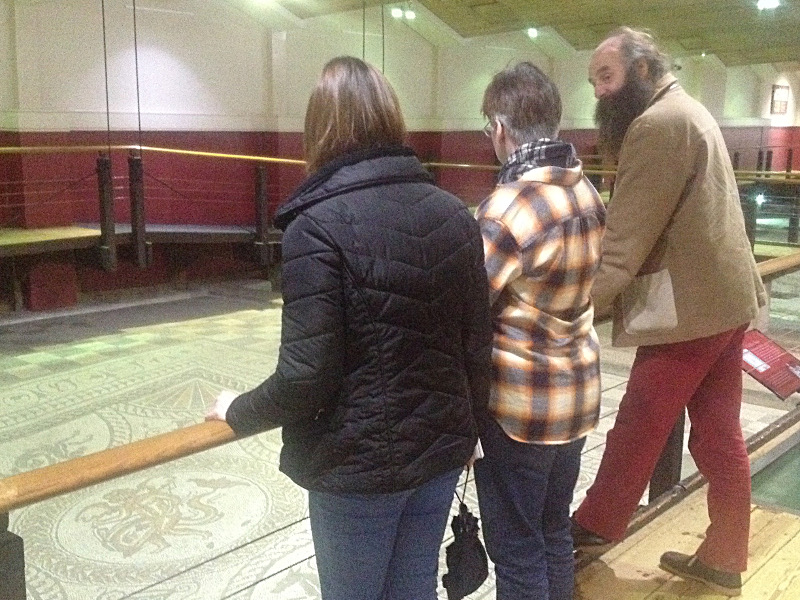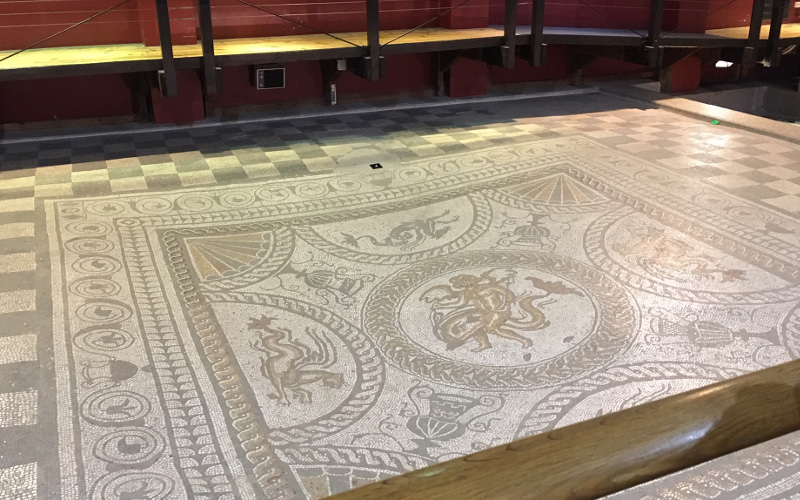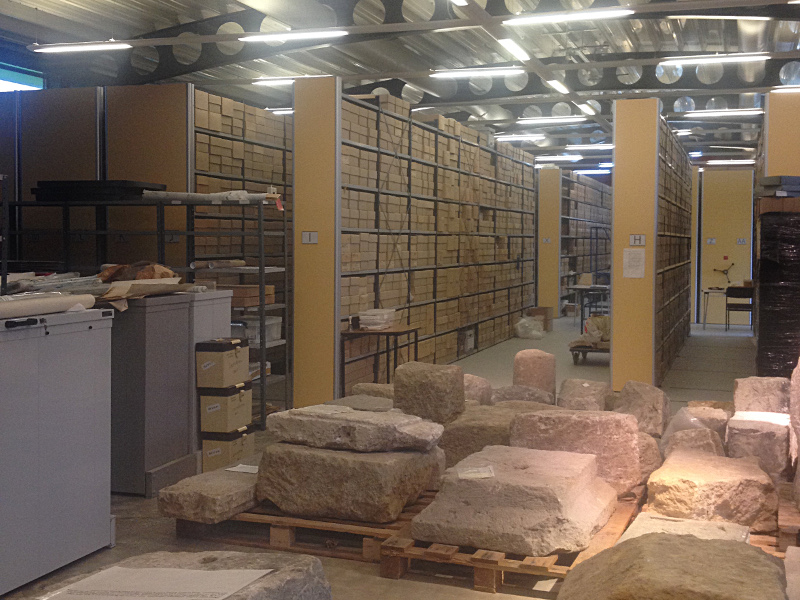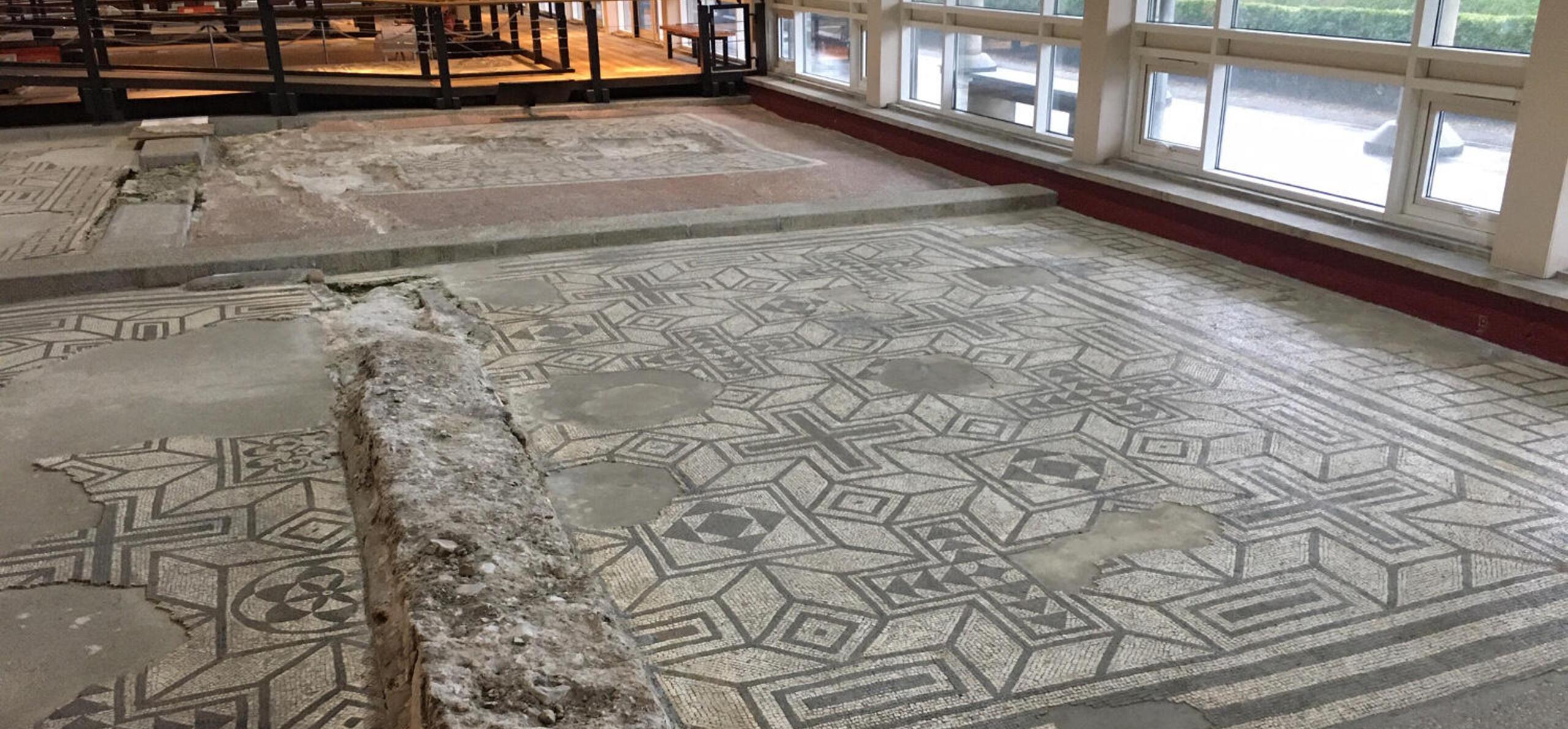Reading Museum has a vast archaeology collection. Collected since the museum's foundation in 1883, it contains artefacts as diverse as ancient weaponry unearthed during work by Thames Water, medieval sculpture from the ruins of Reading Abbey, and internationally significant finds from the Roman town of Calleva at modern-day Silchester.
The team is always seeking to better understand and organise our collections, and so last year, we applied to join a mentoring scheme with the Society of Museum Archaeologists. This organisation offers skill sharing and training opportunities on all aspects of collections care, interpretation and access.
We were successful with our application and as our mentor we were assigned the knowledgeable Rob Symmons, Curator of Fishbourne Roman Palace, the largest residence from the Roman invasion of Britain, dating to 75AD.
We met with Rob at the museum last November, and earlier this year returned the visit to Fishbourne Roman Palace. Read on to find out what our collections team learned, as well as our experience of visiting Fishbourne!

Fishbourne Roman Palace and Reading staff at the Palace
The history of the villa
Fishbourne Roman Palace, near Chichester, West Sussex, is the largest known Roman domestic complex in Britain.
Its modern rediscovery is an amazing story. In 1960, an engineer working for the Portsmouth Water Company, Aubrey Barratt, was digging a trench for a new water main, only to be surprised when they accidentally dug into ancient walls and unearthed a pavement of mosaics!
The villa was built surprisingly early into the Roman conquest of Great Britain. Although the Romans had been in the British Isles since the 50s BC, following an invasion by Julius Caesar, the full conquest took place a century later, led in 43AD by the emperor Claudius. Thirty years later, in 75AD, the villa at Fishbourne was built. It is thought to have been the administrative centre of the region with a living area, a bath house, a large reception and a suite of splendid rooms.
Today, the site is a scheduled ancient monument, owned and operated by Sussex Archaeological Society. The site covers of half the villa and has been subject to regular archaeological digs since its discovery. The north wing of the villa has been uncovered and a building protects the area. Many of the remaining walls and outstanding mosaics are visible in position on the floors.

Fishbourne Roman Palace mosaic
The formal garden in the courtyard of the villa have been replanted with the design of the original Roman era plants and hedging. The ground had been dug out to create an upper level, raising the west wing containing the audience chamber. Rob explained that the original planting holes of the Roman gardeners filled with topsoil were still visible, allowing the modern scheme to follow its ancient counterpart.

Fishbourne Roman Palace store
What we learned
After looking around the site, Rob led us to the villa's extensive discovery centre, featuring a research room, conservation laboratory, and a store where artefacts from the excavations are preserved. We greatly enjoyed our visit to the villa as a visitor experience, but it was also a brilliant chance for us to learn about how another organisation cares for the objects in its care, and explore ways that we can improve our own understanding and preservation of ancient artefacts.
With Rob’s guidance, we have developed an action plan for better handling our own collections, particularly organic and metal remains and ensuring that they are kept in the best storage conditions possible. We’re also extremely grateful for Rob’s advice in exploring how we can better store large plans as well as redevelop our guidelines for researchers visiting our collections.
Our Roman collections
The Roman conquest of Britain is a remarkable part of our country’s early history, and our Silchester Collection holds many ancient Roman artefacts excavated in the local area. Read more.





